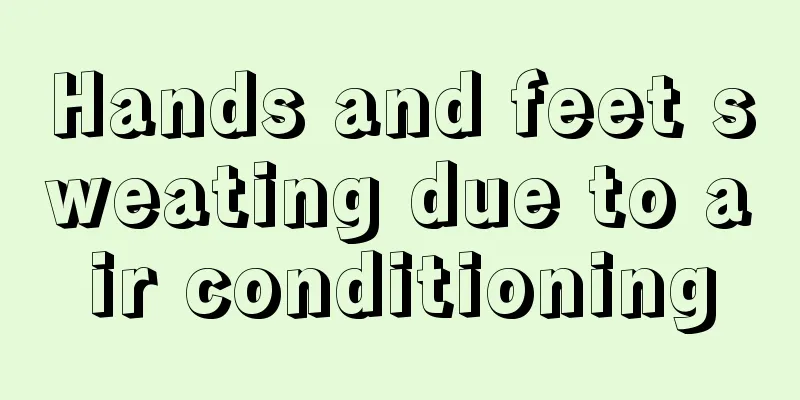What's wrong with calf cramps

|
Almost everyone has experienced calf cramps. Some people experience calf cramps right after swimming, some experience them when they stretch right after waking up in the morning, some experience them while sleeping at night, and some elderly people experience this kind of leg cramps frequently. When the calf cramps, the pain is often unbearable and often requires help from others to massage for a while before it gets better. So, what exactly causes calf cramps? 1. Concept The scientific name for cramps is muscle spasm, which refers to the sudden involuntary rigid contraction of muscles, which can cause muscle stiffness and unbearable pain. Common leg cramps are actually calf muscle spasms. 2. Causes Common causes include cold stimulation, continuous and rapid muscle contraction, excessive sweating, excessive fatigue and calcium deficiency. However, leg cramps are not necessarily caused by calcium deficiency. Leg cramps in middle-aged and elderly people may be caused by lower limb arteriosclerosis and occlusive disease. Symptoms The calf muscles, such as the gastrocnemius, suddenly become very hard and painful, which can last from a few seconds to tens of seconds. IV. Hazards If persistent calf cramps occur while swimming and are not relieved, there is a risk of drowning. 5. Treatment 1. Use your thumb to feel for the main root of the hard and protruding muscles on both sides of the fossa, and then press this place with strong force. The director's excited nerves will calm down, the cramps will stop, and the severe pain will disappear. The above two methods are effective quickly. 2. Sit down, straighten the cramped lower limb, bend the trunk forward, hold the front of the foot with both hands, and slowly and continuously pull it toward the side of the trunk until the cramp is relieved. When helped by others, the patient lies on his back, lifts the affected limb to a vertical position, straightens the knee joint, and uses his hands to continuously press down on the forefoot of the patient. Do not use force when stretching to avoid muscle damage. 3. You can use your fingers to press the Weizhong point (the center point of the depression behind the knee), Chengjin point (the highest point of the posterior calf muscle), Chengshan point (the bifurcation of the posterior calf muscle), etc. 4. Rub your calves quickly with both hands, or press or tap your calf muscles with your hands to help relieve muscle spasms. 5. If the above methods fail to completely relieve the symptoms, you can use a hot towel or hot water bottle to apply to the calf. 6. Prevention 1. Insist on proper exercise. Long-term and gradual exercise can not only slow down the loss of bone mass, but also significantly increase bone salt content and promote the activity of bone cells. 2. When working, moving or resting, do not stay in the same position for a long time, and change your position frequently. 3. To prevent osteoporosis, pay more attention to a balanced diet and regular exercise. Maintain a balanced diet and ensure adequate intake of calcium and vitamin D. High-calcium, low-fat milk and cheese, fish and dark green vegetables are good choices. 4. To prevent gastrocnemius cramps, do sufficient warm-up exercises before strenuous exercise or swimming. 5. Pay attention to keeping warm and also pay attention to your sleeping posture to prevent local muscles from getting cold. 6. Flat feet and other anatomical problems make some people particularly susceptible to leg cramps. The right shoes are one way to make up for it. 7. Stretching your gastrocnemius and foot muscles before bed can help prevent cramps in the first place. The stretching method is the same as that used to stretch the gastrocnemius and foot muscles when the leg cramps. You can also place the front of your foot on the first step of the stairs and slowly press your heel down so that your heel is lower than the step. 8. If you are very active, you need to drink fluids to avoid dehydration, but don't drink too much. Large amounts of fluid can dilute the sodium level in your blood, which can cause a variety of problems, including muscle cramps. |
<<: What's wrong with the calf muscle pain
>>: Calf soreness and heavy legs
Recommend
Digesting too quickly makes you hungry
The digestive function of our stomach and intesti...
The difference between bare face cream and liquid foundation
Bare face cream is a skin care product and can be...
How long can a high-risk prostate cancer patient live
How long can patients with high-risk prostate can...
How is acne classified? These are all common types
Most people know about acne, which is extremely c...
What should be the creatinine level after dialysis
Dialysis refers to hemodialysis, and hemodialysis...
The dangers of bladder cancer
The occurrence of any cancer will cause serious h...
What to do if the hairline on both sides moves back
The receding hairline actually has a huge impact ...
Treatment of hyperthyroidism insomnia
Because patients with hyperthyroidism have an ove...
Six major hazards of long-term wearing of contact lenses
Wearing contact lenses seems to be more beautiful...
8 things to note when traveling during the National Day holiday, don't let illness hurt you
The National Day Golden Week is coming soon. The ...
When is the safest time to have sex?
When it comes to contraception, many young people...
Why is hair so oily
Sometimes we feel that our hair is very oily. We ...
Good living habits can help everyone stay away from colorectal cancer
Many people may find colon cancer scary, but in f...
What is the order of swimming, sweat steaming and bathing
Sweat steaming can not only achieve the effect of...
The 19 foods with the strongest detoxification function
Yam can regulate the digestive system, reduce sub...









